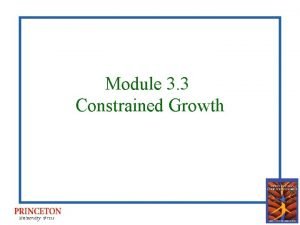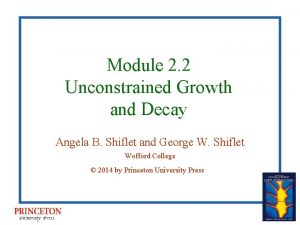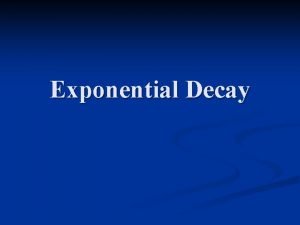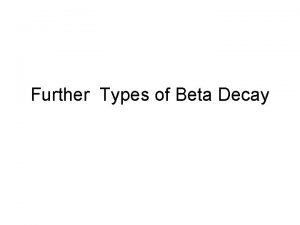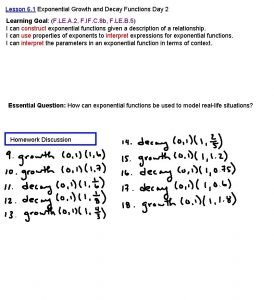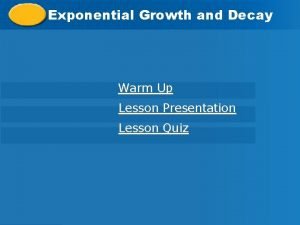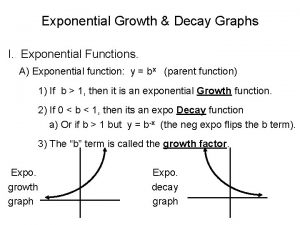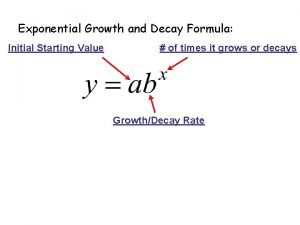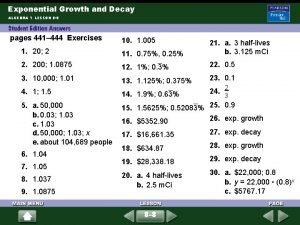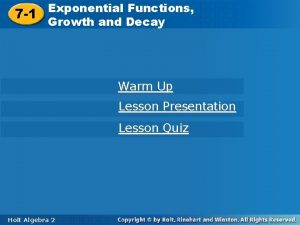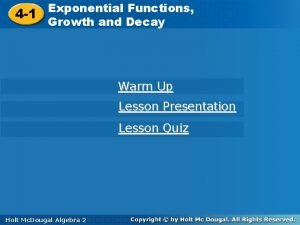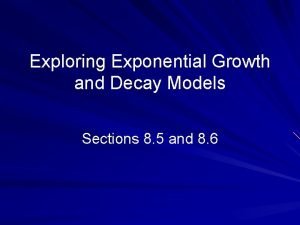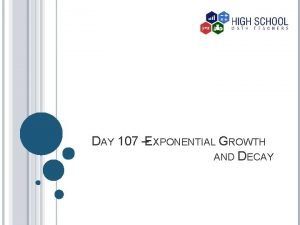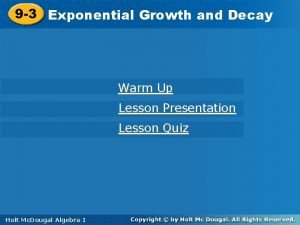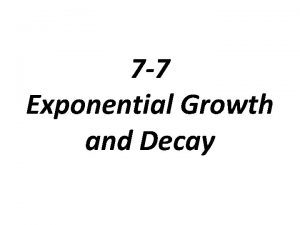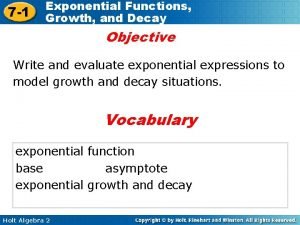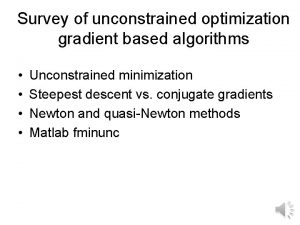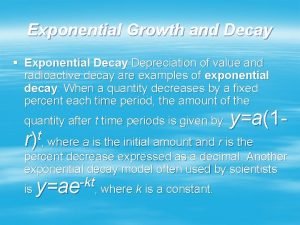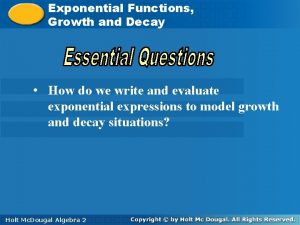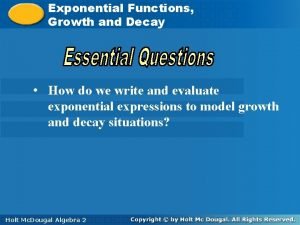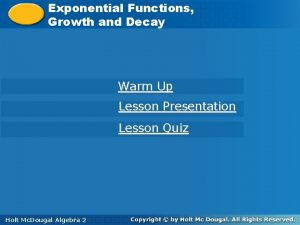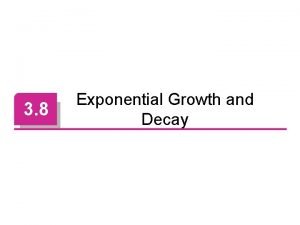Module 2 2 Unconstrained Growth and Decay Angela















- Slides: 15

Module 2. 2 Unconstrained Growth and Decay Angela B. Shiflet and George W. Shiflet Wofford College © 2014 by Princeton University Press

Rate of Change •

Example of unconstrained growth • Population growth without constraints • Rate of change of population is directly proportional to number of individuals in the population (P) • Differential equation d. P/dt = r. P, where r is growth rate

Finite difference equation • (new population) = (old population) + (change in population) • population(t) = population(t - ∆t) + ∆population = population(t - ∆t) + (growth)*∆t where growth = growth rate * current population

Finite difference equation • A finite difference equation is of the following form: (new value) = (old value) + (change in value) Such an equation is a discrete approximation to a differential equation

System's modeling tool • Helps to model • Performs simulation • What happens at one time step influences what happens at next

Stock/Box Variable/Reservoir • Anything that accumulates, buffer, resource • Examples • Population • Radioactivity • Phosphate • Body fat • Labor

Flow • Represents activities • Examples • Birthing, dying with population • Intaking & expending calories with body fat

Converter/Variable/Formula • Contains equations that generate output for each time period • Converts inputs into outputs • Takes in information & transforms for use by another variable • Examples • Growth rate with population & growth • Calories in a food

Connector/Arrow/Arc • Link • Transmits information & inputs • Regulates flows

With system dynamics tool • Enter equations • Run simulations • Produce graphs • Produce tables

Algorithm for simulation of exponential growth • initialize simulation. Length, population, growth. Rate. ∆t • num. Iterations simulation. Length / ∆t • for t going from 0 to simulation. Length in steps of size ∆t do the following: • • growth. Rate * population + growth * ∆t t i * ∆t display t, growth, and population

Analytic Solution • P = P 0 ert (use separation of variables and then integrate) • Can determine with a computer algebra system • We can refine the model by having birth rate and death rate, so growth rate = birth rate – death rate

Exponential Decay • Rate of change of mass of radioactive substance proportional to mass of substance • Constant of proportionality negative • Radioactive carbon-14: -0. 000120968 • d. Q/dt = ? • d. Q/dt = -0. 000120968 Q • Q = Q 0 e-0. 000120968 t • Carbon dating • The half-life is the period of time that it takes for a radioactive substance to decay to half of its original amount Q 0, i. e. 0. 5 Q 0.

Quick Review Questions • Question 4 • Question 5
 Unconstrained growth
Unconstrained growth Unconstrained decay
Unconstrained decay Growth and decay factors
Growth and decay factors Beta decay equation
Beta decay equation Lesson 6 exponential growth
Lesson 6 exponential growth Half life examples science
Half life examples science Exponential decay or growth
Exponential decay or growth Starting value
Starting value Practice 8-8 exponential growth and decay
Practice 8-8 exponential growth and decay 7-1 exponential functions growth and decay
7-1 exponential functions growth and decay Exponential decay function
Exponential decay function Exponential decay formula
Exponential decay formula Growth and decay of exponential functions
Growth and decay of exponential functions Half life formula algebra 2
Half life formula algebra 2 7-7 exponential growth and decay
7-7 exponential growth and decay How to know if a function is growth or decay
How to know if a function is growth or decay
